Vanessa Volz
Tools for Landscape Analysis of Optimisation Problems in Procedural Content Generation for Games
Feb 16, 2023



Abstract:The term Procedural Content Generation (PCG) refers to the (semi-)automatic generation of game content by algorithmic means, and its methods are becoming increasingly popular in game-oriented research and industry. A special class of these methods, which is commonly known as search-based PCG, treats the given task as an optimisation problem. Such problems are predominantly tackled by evolutionary algorithms. We will demonstrate in this paper that obtaining more information about the defined optimisation problem can substantially improve our understanding of how to approach the generation of content. To do so, we present and discuss three efficient analysis tools, namely diagonal walks, the estimation of high-level properties, as well as problem similarity measures. We discuss the purpose of each of the considered methods in the context of PCG and provide guidelines for the interpretation of the results received. This way we aim to provide methods for the comparison of PCG approaches and eventually, increase the quality and practicality of generated content in industry.
Hybrid Encoding For Generating Large Scale Game Level Patterns With Local Variations Using a GAN
May 27, 2021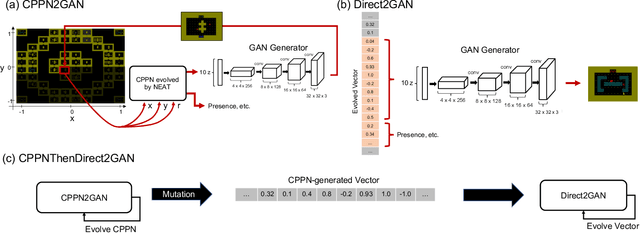



Abstract:Generative Adversarial Networks (GANs) are a powerful indirect genotype-to-phenotype mapping for evolutionary search, but they have limitations. In particular, GAN output does not scale to arbitrary dimensions, and there is no obvious way to combine GAN outputs into a cohesive whole, which would be useful in many areas, such as video game level generation. Game levels often consist of several segments, sometimes repeated directly or with variation, organized into an engaging pattern. Such patterns can be produced with Compositional Pattern Producing Networks (CPPNs). Specifically, a CPPN can define latent vector GAN inputs as a function of geometry, which provides a way to organize level segments output by a GAN into a complete level. However, a collection of latent vectors can also be evolved directly, to produce more chaotic levels. Here, we propose a new hybrid approach that evolves CPPNs first, but allows the latent vectors to evolve later, and combines the benefits of both approaches. These approaches are evaluated in Super Mario Bros. and The Legend of Zelda. We previously demonstrated via divergent search (MAP-Elites) that CPPNs better cover the space of possible levels than directly evolved levels. Here, we show that the hybrid approach can cover areas that neither of the other methods can and achieves comparable or superior QD scores.
Identifying Properties of Real-World Optimisation Problems through a Questionnaire
Nov 11, 2020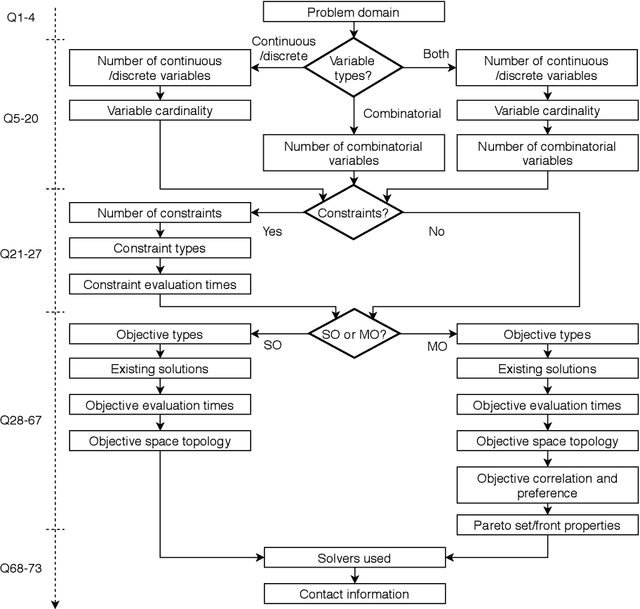
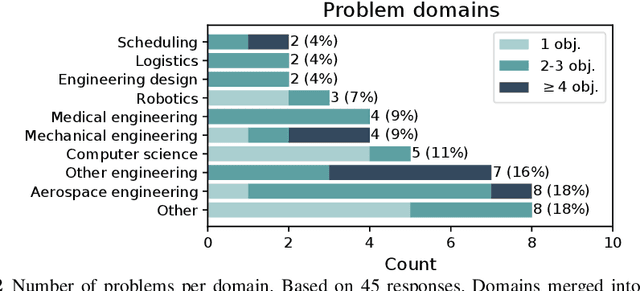
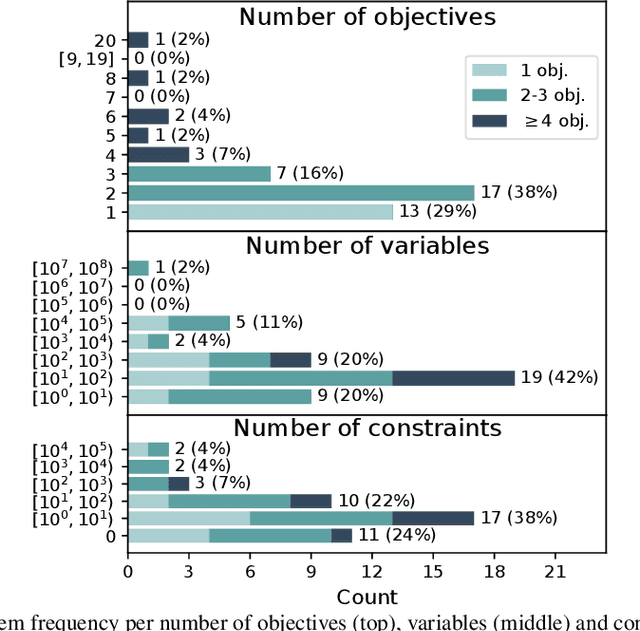

Abstract:Optimisation algorithms are commonly compared on benchmarks to get insight into performance differences. However, it is not clear how closely benchmarks match the properties of real-world problems because these properties are largely unknown. This work investigates the properties of real-world problems through a questionnaire to enable the design of future benchmark problems that more closely resemble those found in the real world. The results, while not representative, show that many problems possess at least one of the following properties: they are constrained, deterministic, have only continuous variables, require substantial computation times for both the objectives and the constraints, or allow a limited number of evaluations. Properties like known optimal solutions and analytical gradients are rarely available, limiting the options in guiding the optimisation process. These are all important aspects to consider when designing realistic benchmark problems. At the same time, objective functions are often reported to be black-box and since many problem properties are unknown the design of realistic benchmarks is difficult. To further improve the understanding of real-world problems, readers working on a real-world optimisation problem are encouraged to fill out the questionnaire: https://tinyurl.com/opt-survey
Benchmarking in Optimization: Best Practice and Open Issues
Jul 07, 2020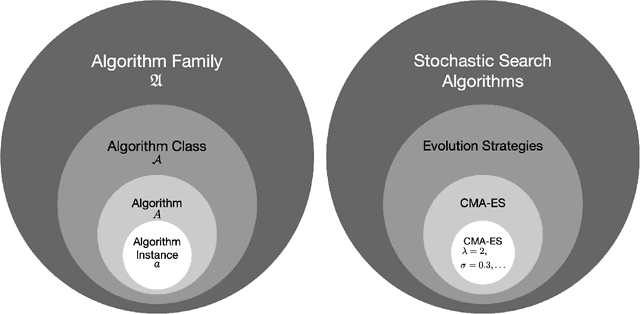
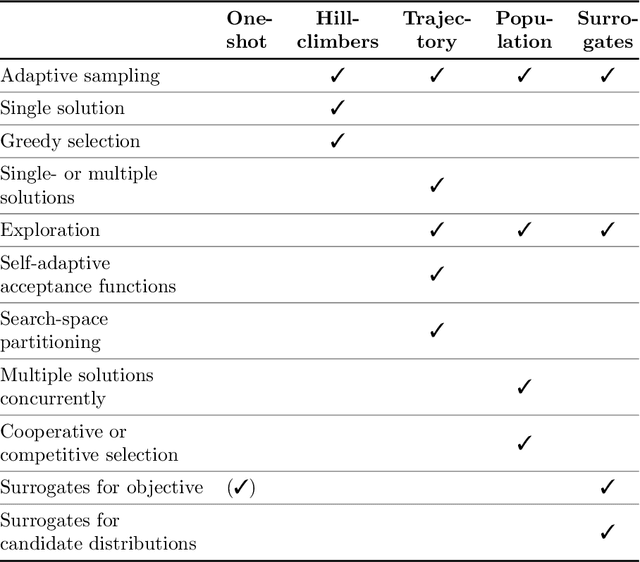
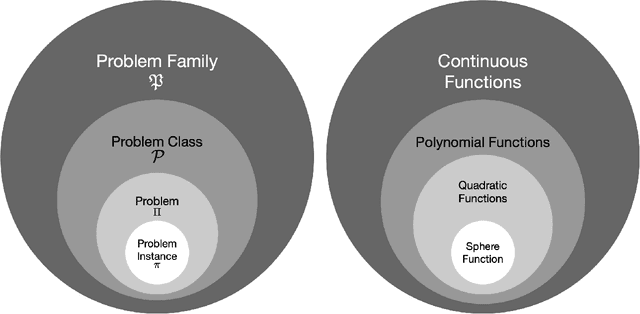

Abstract:This survey compiles ideas and recommendations from more than a dozen researchers with different backgrounds and from different institutes around the world. Promoting best practice in benchmarking is its main goal. The article discusses eight essential topics in benchmarking: clearly stated goals, well-specified problems, suitable algorithms, adequate performance measures, thoughtful analysis, effective and efficient designs, comprehensible presentations, and guaranteed reproducibility. The final goal is to provide well-accepted guidelines (rules) that might be useful for authors and reviewers. As benchmarking in optimization is an active and evolving field of research this manuscript is meant to co-evolve over time by means of periodic updates.
Towards Game-Playing AI Benchmarks via Performance Reporting Standards
Jul 06, 2020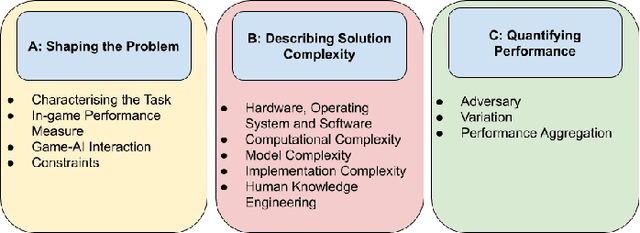
Abstract:While games have been used extensively as milestones to evaluate game-playing AI, there exists no standardised framework for reporting the obtained observations. As a result, it remains difficult to draw general conclusions about the strengths and weaknesses of different game-playing AI algorithms. In this paper, we propose reporting guidelines for AI game-playing performance that, if followed, provide information suitable for unbiased comparisons between different AI approaches. The vision we describe is to build benchmarks and competitions based on such guidelines in order to be able to draw more general conclusions about the behaviour of different AI algorithms, as well as the types of challenges different games pose.
Capturing Local and Global Patterns in Procedural Content Generation via Machine Learning
May 26, 2020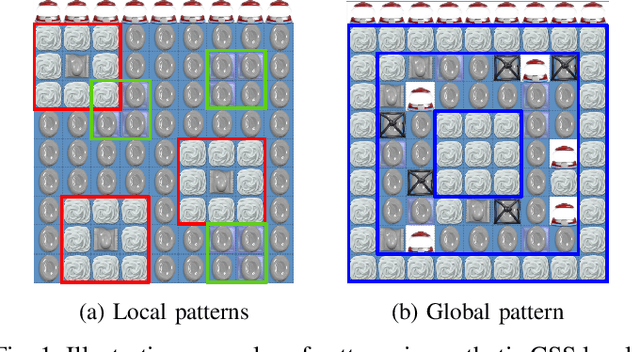
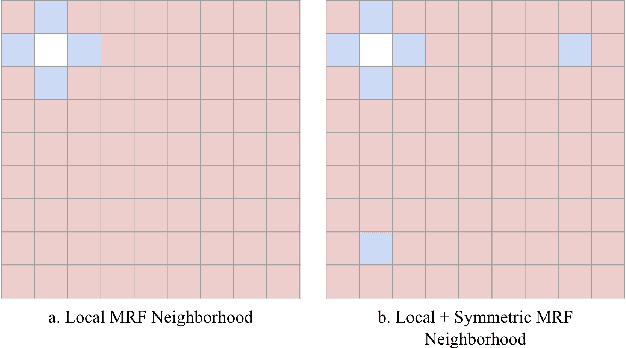
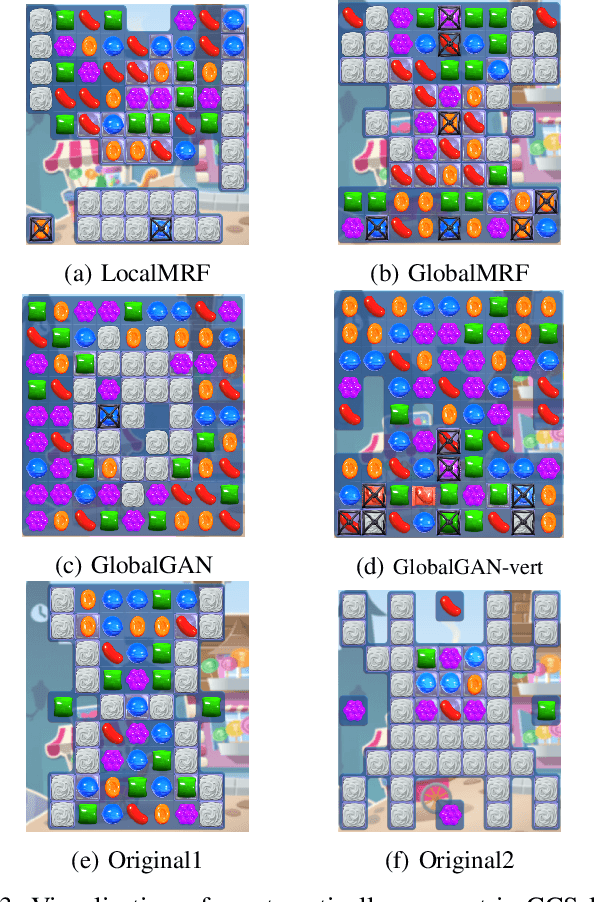
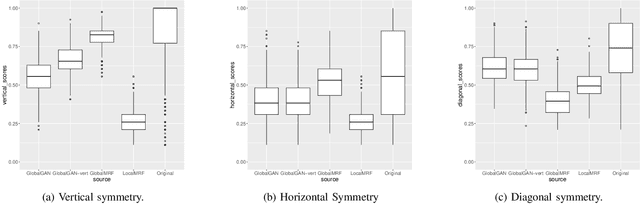
Abstract:Recent procedural content generation via machine learning (PCGML) methods allow learning from existing content to produce similar content automatically. While these approaches are able to generate content for different games (e.g. Super Mario Bros., DOOM, Zelda, and Kid Icarus), it is an open questions how well these approaches can capture large-scale visual patterns such as symmetry. In this paper, we propose match-three games as a domain to test PCGML algorithms regarding their ability to generate suitable patterns. We demonstrate that popular algorithm such as Generative Adversarial Networks struggle in this domain and propose adaptations to improve their performance. In particular we augment the neighborhood of a Markov Random Fields approach to not only take local but also symmetric positional information into account. We conduct several empirical tests including a user study that show the improvements achieved by the proposed modifications, and obtain promising results.
Towards Realistic Optimization Benchmarks: A Questionnaire on the Properties of Real-World Problems
Apr 14, 2020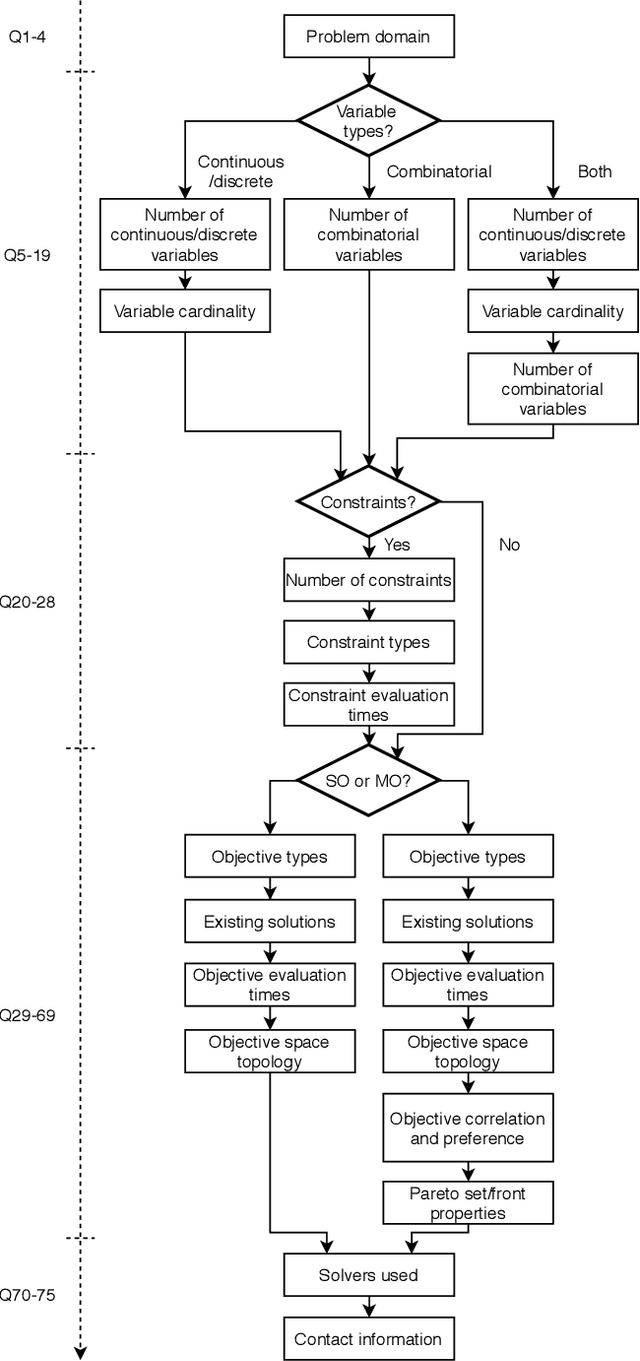
Abstract:Benchmarks are a useful tool for empirical performance comparisons. However, one of the main shortcomings of existing benchmarks is that it remains largely unclear how they relate to real-world problems. What does an algorithm's performance on a benchmark say about its potential on a specific real-world problem? This work aims to identify properties of real-world problems through a questionnaire on real-world single-, multi-, and many-objective optimization problems. Based on initial responses, a few challenges that have to be considered in the design of realistic benchmarks can already be identified. A key point for future work is to gather more responses to the questionnaire to allow an analysis of common combinations of properties. In turn, such common combinations can then be included in improved benchmark suites. To gather more data, the reader is invited to participate in the questionnaire at: https://tinyurl.com/opt-survey
CPPN2GAN: Combining Compositional Pattern Producing Networks and GANs for Large-scale Pattern Generation
Apr 03, 2020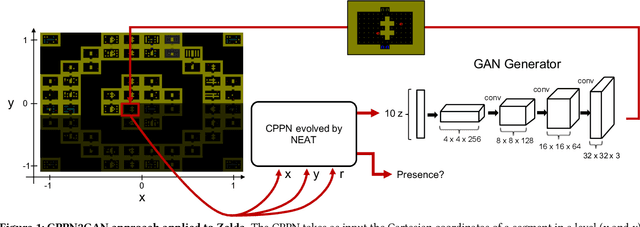
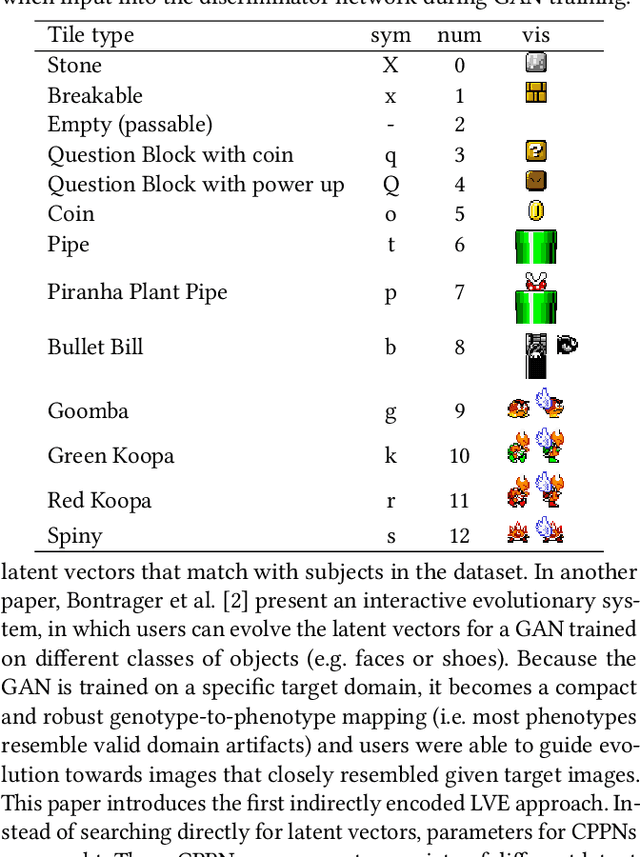
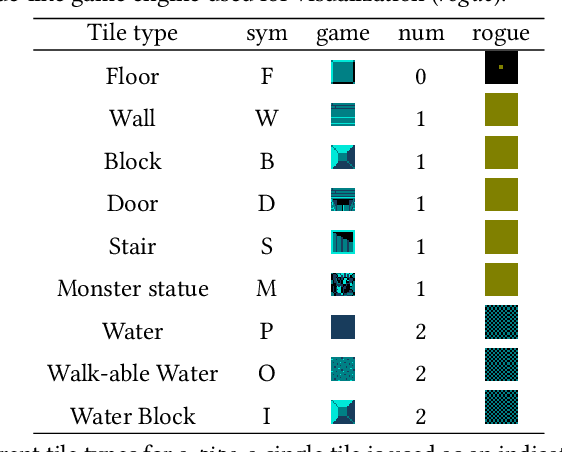
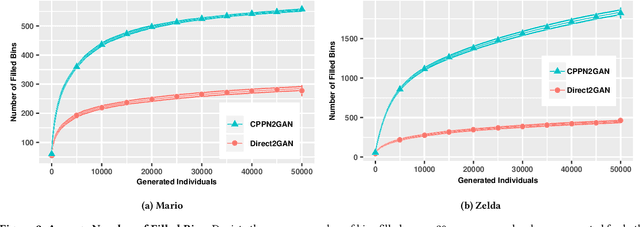
Abstract:Generative Adversarial Networks (GANs) are proving to be a powerful indirect genotype-to-phenotype mapping for evolutionary search, but they have limitations. In particular, GAN output does not scale to arbitrary dimensions, and there is no obvious way of combining multiple GAN outputs into a cohesive whole, which would be useful in many areas, such as the generation of video game levels. Game levels often consist of several segments, sometimes repeated directly or with variation, organized into an engaging pattern. Such patterns can be produced with Compositional Pattern Producing Networks (CPPNs). Specifically, a CPPN can define latent vector GAN inputs as a function of geometry, which provides a way to organize level segments output by a GAN into a complete level. This new CPPN2GAN approach is validated in both Super Mario Bros. and The Legend of Zelda. Specifically, divergent search via MAP-Elites demonstrates that CPPN2GAN can better cover the space of possible levels. The layouts of the resulting levels are also more cohesive and aesthetically consistent.
Interactive Evolution and Exploration Within Latent Level-Design Space of Generative Adversarial Networks
Mar 31, 2020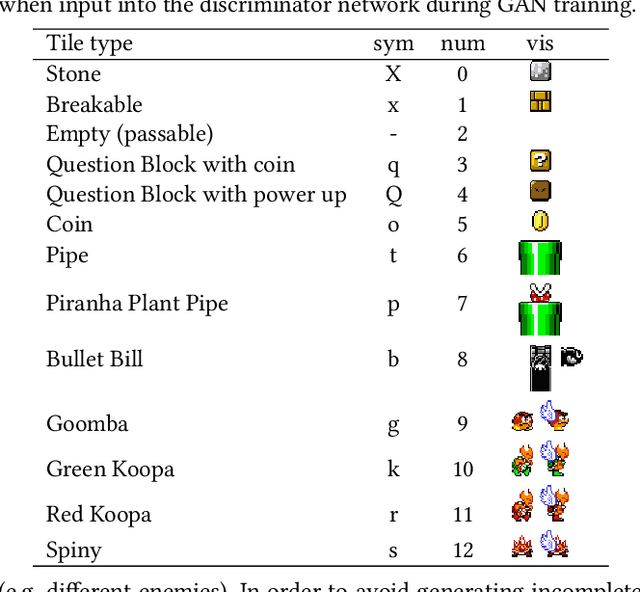
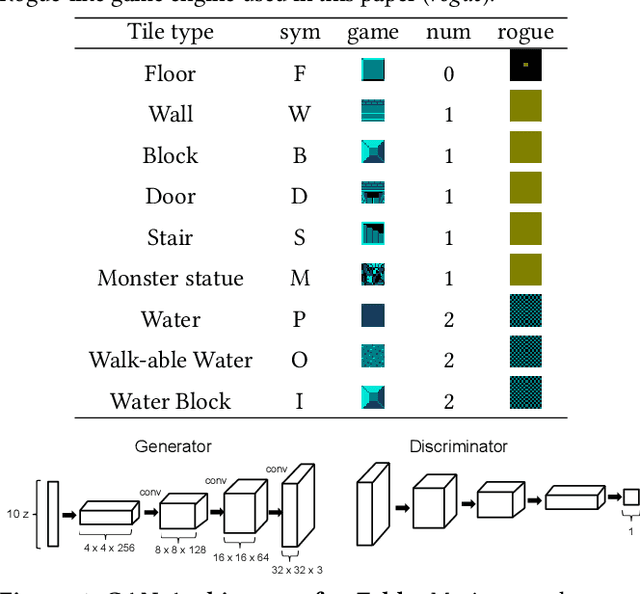

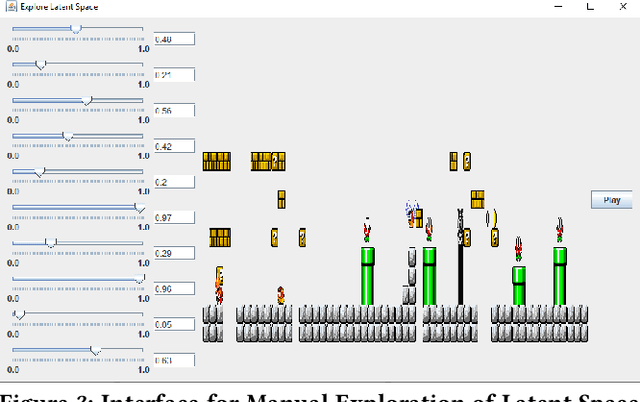
Abstract:Generative Adversarial Networks (GANs) are an emerging form of indirect encoding. The GAN is trained to induce a latent space on training data, and a real-valued evolutionary algorithm can search that latent space. Such Latent Variable Evolution (LVE) has recently been applied to game levels. However, it is hard for objective scores to capture level features that are appealing to players. Therefore, this paper introduces a tool for interactive LVE of tile-based levels for games. The tool also allows for direct exploration of the latent dimensions, and allows users to play discovered levels. The tool works for a variety of GAN models trained for both Super Mario Bros. and The Legend of Zelda, and is easily generalizable to other games. A user study shows that both the evolution and latent space exploration features are appreciated, with a slight preference for direct exploration, but combining these features allows users to discover even better levels. User feedback also indicates how this system could eventually grow into a commercial design tool, with the addition of a few enhancements.
Learning Local Forward Models on Unforgiving Games
Sep 01, 2019
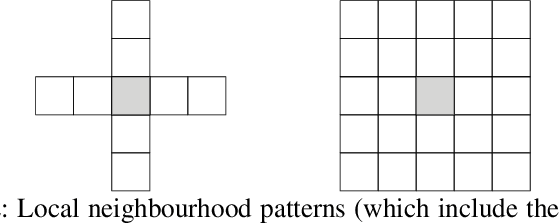
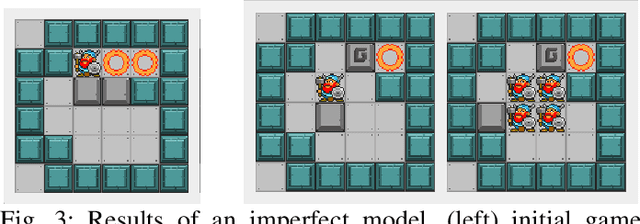
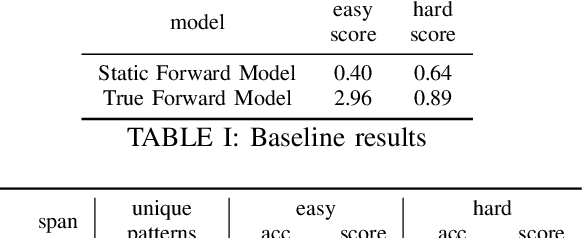
Abstract:This paper examines learning approaches for forward models based on local cell transition functions. We provide a formal definition of local forward models for which we propose two basic learning approaches. Our analysis is based on the game Sokoban, where a wrong action can lead to an unsolvable game state. Therefore, an accurate prediction of an action's resulting state is necessary to avoid this scenario. In contrast to learning the complete state transition function, local forward models allow extracting multiple training examples from a single state transition. In this way, the Hash Set model, as well as the Decision Tree model, quickly learn to predict upcoming state transitions of both the training and the test set. Applying the model using a statistical forward planner showed that the best models can be used to satisfying degree even in cases in which the test levels have not yet been seen. Our evaluation includes an analysis of various local neighbourhood patterns and sizes to test the learners' capabilities in case too few or too many attributes are extracted, of which the latter has shown do degrade the performance of the model learner.
 Add to Chrome
Add to Chrome Add to Firefox
Add to Firefox Add to Edge
Add to Edge